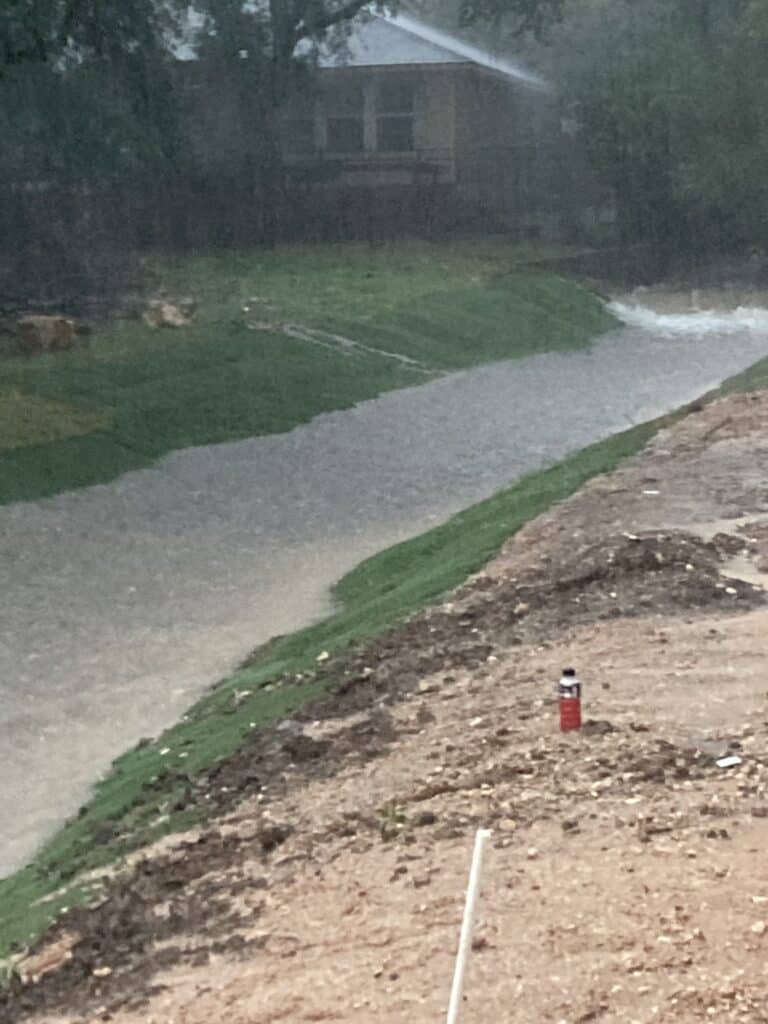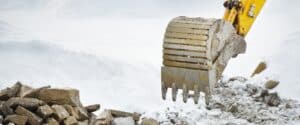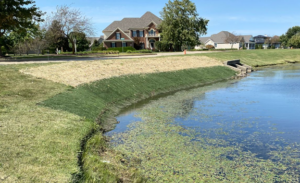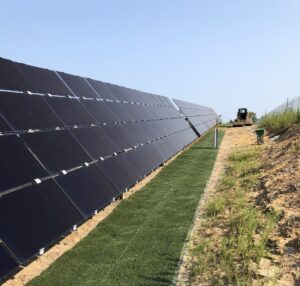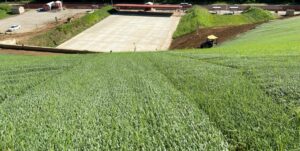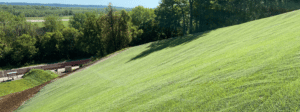Note: This blog post was written before Hurricane Ian impacted the Southeastern United States. We chose to focus on St. Louis floods for much of this blog post because we are based in the area, but the events in the Southeast only prove how imminent and universal the problem of flooding is. Our thoughts and prayers are with those affected by this catastrophic event.
The Future of Flooding
According to the World Health Organization, floods are the most frequent natural disasters, comprising between 80-90% of natural disasters in the last ten years. Between 1998 and 2017, floods affected more than 2 billion people worldwide. In many parts of the world, the risk of flood is increasing both due to changes in climate as well as shifting population densities and living conditions.
One of the less well-known contributors to flooding is the destruction or conversion of our nation’s wetlands. In the US, more than half of the wetlands in the lower 48 states have been converted to other uses since the mid-1700s. Ironically, much of the disruption to wetlands and flood plains is accomplished with the aim of reducing flooding and flood damage. There is evidence that flood walls and levees actually increase the magnitude and frequency of flooding. This destruction of wetlands is occurring right now all over the globe, and despite the best efforts of scientists and climate activists, it doesn’t look like it’s stopping anytime soon.
When talking about flooding, you often hear a flood event described as a hundred-year flood if it’s significant enough. This is a term thrown around by the media often enough that it loses meaning to the casual observer—but a hundred-year flood is a specific classification that, unfortunately, is quickly changing. A hundred-year flood describes a flood whose flow rate has a 1% chance of being equaled or exceeded in that area on a given year. This means that multiple hundred-year flood events—or thousand-year flood events, for that matter—can occur back-to-back.
With high-intensity storm events occurring more frequently than ever due to climate change, we can no longer consider massive floods to be rare outliers. What would have been viewed as a hundred-year flood just thirty years ago is now a common occurrence, and events known as hundred-year floods now are even more devastating than in the past.
New Land Developments are at Risk
It’s not just emissions and other traditional sources of climate change that exacerbate our country’s flood problem. New land development poses a greater flood risk due to water runoff and soil loss. If you are in the process of developing land, the ground is disturbed and vegetation is generally removed, leaving the soil unprotected. When high-intensity storms occur on new land developments, the runoff displaces and disperses soil and contaminants. Furthermore, because the land is usually bare on new developments, the water runoff often leads to more flooding in neighboring areas.
If you have a new land development, your site is at an increased risk of flood damage and soil displacement, possibly halting your development and costing you millions. Even if you’ve already paved over or poured concrete on your development, the high area of impervious surfaces is likely to exacerbate flooding around your property.


What Can You Do About it?
While natural disasters are unavoidable in most instances, there are steps you can take to protect your investment and limit damage to the surrounding area during a flood.
- Understand your Risk Factors
Your property’s location plays a major role in determining how much damage it will likely experience during a flood or intense storm event. You can use the FEMA flood map service center to determine the relative risk of flooding wherever your property is located. Understanding your risk in advance will help you prioritize your flood preparedness in context of past flooding in the same area. With enough time in advance, you can take preventative measures based on your relative flood risk.
- Ensure you Have Proper drainage and water runoff
It’s important to maintain gutters, splashpads, and downspouts on your property if applicable. Storm drains are typically designed to carry the water from the projected largest storm over a ten-to-25-year period. However, as mentioned above, ten-, 25-, and hundred-year storm events are becoming more common. Make sure your gutters, storm drains, and drainage ditches are clean and unobstructed. If water can’t safely flow from your property, it will simply build up and cause damage or it will follow a more destructive path.
- Elevate and Protect Utilities
Water damage can wreak havoc on expensive utilities systems. Air conditioners, fuse boxes, heat pumps, water meters and other equipment are susceptible to damage from flood waters. Placing these utilities in protected, elevated, and well-drained areas will prevent damages during storms and flood events. Installing vegetation or other pervious surfaces around your utilities can help reduce the likelihood of damage.
- Reduce Impervious Surfaces
Impervious surfaces such as asphalt and concrete can cause water to instantly run off the surface and overburden storm sewers, leading to more destructive flooding overall. Green space and other high surface area surfaces help control the amount of water that reaches vital drainage installations to reduce peak load on the system. In addition, surfaces such as vegetation or synthetic vegetation also have the benefit of protecting soil from hydraulic shear forces that cause erosion and subsequent soil displacement.
- Install a Sump Pump
Depending on your property, you may be able to avoid flood damage completely by preparing for the worst with a sump pump. These pumps can range from simple home-use devices to massive commercial installations. In any case, pumping groundwater from your property and into proper drainage channels will significantly reduce possible flood damage.
The New Solution
While protecting your property from flood damage is a holistic, multi-faceted process, there is a way to accomplish much of the preparation listed above with just one product.
InstaTurf is a rolled erosion control product that instantly protects soil and provides many of the other advantages found in natural vegetation growth. Unlike concrete and other hard armor erosion solutions, InstaTurf ShearForce products have a permeable surface to allow water to flow through and vegetation to take hold.
Vegetation is a surefire way to limit harmful water flow from your property as it reduces the impervious area of your land and safely traps water. Unfortunately, conventional turf reinforcement mats only provide adequate erosion protection after vegetation establishes through the matting, which could take months to over a year. Even before vegetation growth, InstaTurf ShearForce products provide the same soil protection as 30in. rock riprap and the synthetic turf matrix captures water similarly to natural grass. Once vegetation grows in, InstaTurf provides even better soil protection.
Superlative soil protection means the grading you accomplish on your property won’t be disrupted by heavy erosion. InstaTurf ShearForce products protect your drainage channels, too. We have a product for typical hydraulic shear protection as well as a heavy-duty version with a weighted ballast to prevent uplift during heavy deluges so no application is too demanding.
InstaTurf is manufactured in St. Louis, Missouri, and is proven to stand up to high hydraulic shear stresses. InstaTurf ShearForce products can be installed in minutes with absolutely minimal training and no necessary heavy equipment.
We wanted to share this information not only because we have an innovative solution against flood damage, but also because we know firsthand the kind of destruction flooding can cause.
Multiple Hundred-Year Floods in a Row
Once again, it’s been a wet summer here in St. Louis and for much of the country. In late July, the St. Louis area received more than 7.5 inches of rain in just 6 hours, causing massive flooding and at least one death. To put that into perspective, the previous record for highest 24-hour rainfall on record in St. Louis was 7.02”. That record was shattered by over 2 inches in late July. Around a quarter of our average yearly rainfall fell in about 12 hours. The next week, precipitation reached four inches in a day, flooding more areas and exacerbating the situation for those already affected by the flood that occurred the week prior. The water was just part of the problem; on every sidewalk in the city, you could see the silty deposits indicating heavy erosion throughout the area. This isn’t a local problem, either. The fact of the matter is severe storm events and catastrophic floods are becoming more common every day.
Unfortunately, here in St. Louis we are all too familiar with floods. St. Louis’s history can be read from high water mark plaques and soggy, gumbo-like soil. The flood of 1993 is perhaps the most famous flood to hit the area—but because of the St. Louis area’s topology, climate, and proximity to the Mississippi and Missouri rivers, many floods have caused massive property losses, injuries, and deaths.
A History of Inundations
Our most recent flood event was remarkable, but not exactly unique. Missouri has been the battleground between civilization and nature for many years.
In 1844, Missouri experienced what is currently known as the greatest flooding of the lower Missouri River basin. Total rainfall from May to June ranged from 18 inches in St. Louis, Missouri, to 27 inches at Ft. Scott, Kansas. In St. Louis, the flood crested at 41.32 feet.
In 1927, the U.S. experienced the most destructive flood in its history—the Mississippi River flood of 1927. The flood inundated 27,000 square miles up to 30 feet in depth, affecting Arkansas, Illinois, Kansas, Kentucky, Louisiana, Mississippi, Missouri, Oklahoma, Tennessee, and even as far as Texas. Approximately 700,000 people were left homeless and approximately 500 lost their lives. In total, the costs of the flood damages reached an estimated $1 billion—around a third of the national budget. Adjusted for inflation, that is over a trillion dollars’ worth of damage.
In 1937, the Ohio river flooded, damaging areas from Pittsburgh to Cairo, Illinois. 385 people died, one million people were left homeless, and property damage exceeded $500 million ($8.7 billion adjusted for inflation). In order to save Cairo, Illinois from the brunt of the flood’s destruction, the decision was made to intentionally breach the levee at Bird’s Point, Missouri, thereby flooding thousands of acres in southeast Missouri.
In 1993, the Midwestern Unites States experienced a massive flood along the Mississippi and Missouri rivers and their tributaries. The flood caused $15 billion in damages (approximately $27 billion when adjusted for inflation) and destroyed over 100,000 homes over a total of about 320,000 square miles. The disaster triggered the largest economic disaster in Missouri’s history.
Floods have taken so much from so many people, and we’re proud to offer some relief for those affected by or concerned with flood damage. Visit our products page to learn more about how InstaTurf can help you weather the storm.

